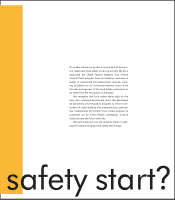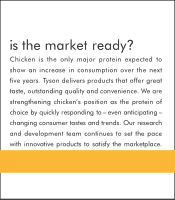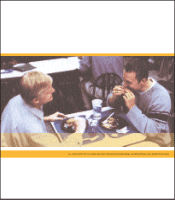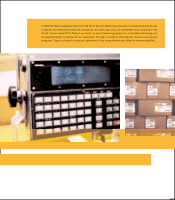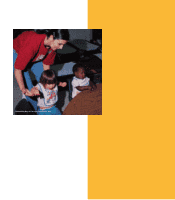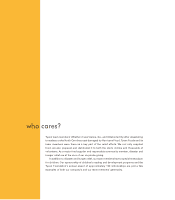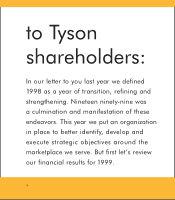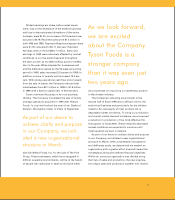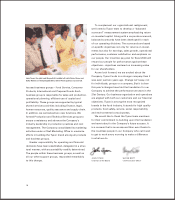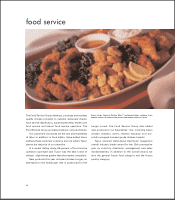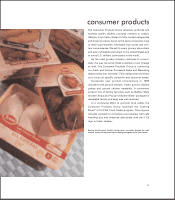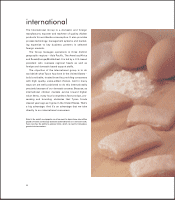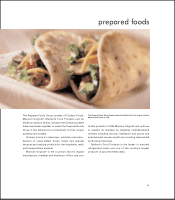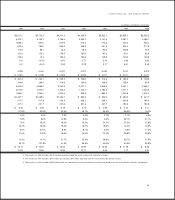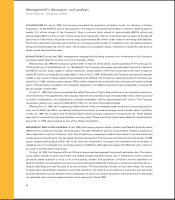Tyson Foods 1999 Annual Report Download - page 19
Download and view the complete annual report
Please find page 19 of the 1999 Tyson Foods annual report below. You can navigate through the pages in the report by either clicking on the pages listed below, or by using the keyword search tool below to find specific information within the annual report.
17
Diluted earnings per share, before asset impair-
ment, loss on the divestiture of the seafood business
and loss on the anticipated divestiture of the swine
business, were $1.20, an increase of 51.9 percent over
last year’s $0.79. Reported sales were $7.4 billion in
both 1998 and 1999. Reported diluted earnings per share
were $1.00 compared to $0.11 last year. Reported
earnings were a record $230.1 million. Sales and
earnings in 1999 were adversely affected by market
conditions in our live swine business throughout
the year, as well as by deteriorating poultry markets
later in the year. When adjusted for businesses sold
and the difference caused by the 53-week accounting
period in 1998, sales increased 2.8 percent in 1999. In
addition, volume of pounds sold increased 12.3 per-
cent. With strong operational cash flow and proceeds
from the sale of assets, the Company reduced total
indebtedness from $2.1 billion in 1998 to $1.8 billion
in 1999 with a debt to capital ratio of 45.9 percent.
Tyson continued focusing on its core business,
chicken. The Company completed the sale of turkey
and egg operations acquired in 1998 with Hudson
Foods. In July we finalized the sale of our Seafood
Division. We signed a letter of intent in September
with Smithfield Foods, Inc. for the sale of The Pork
Group. These businesses, which have struggled in
difficult operating environments, will be in the hands
of people who specialize in seafood and pork while
we concentrate on improving our leadership position
in the chicken industry.
The Company’s operating environment in the
second half of fiscal 1999 was a difficult one for the
entire food business and particularly for the chicken
industry. An oversupply of meat proteins led to
depressed market conditions. To bring our production
and current market demand in balance, we announced
a reduction in production of live birds effective the
first quarter of fiscal 2000. These relatively depressed
market conditions are expected to continue until
meat supplies are back in balance.
As part of our desire to achieve clarity and purpose
in our Company, we initiated a new organizational
structure in March. After considerable introspection
and deliberate study, we determined we needed an
organization with a greater effort directed toward the
marketplace along with defined financial objectives.
While our previous organization was divided along
the lines of sales and production, the new organiza-
tion aligns sales and production together into market
As part of our desire to
achieve clarity and purpose
in our Company, we initi-
ated a new organizational
structure in March.
As we look forward,
we are excited
about the Company.
Tyson Foods is a
stronger company
than it was even just
two years ago.


